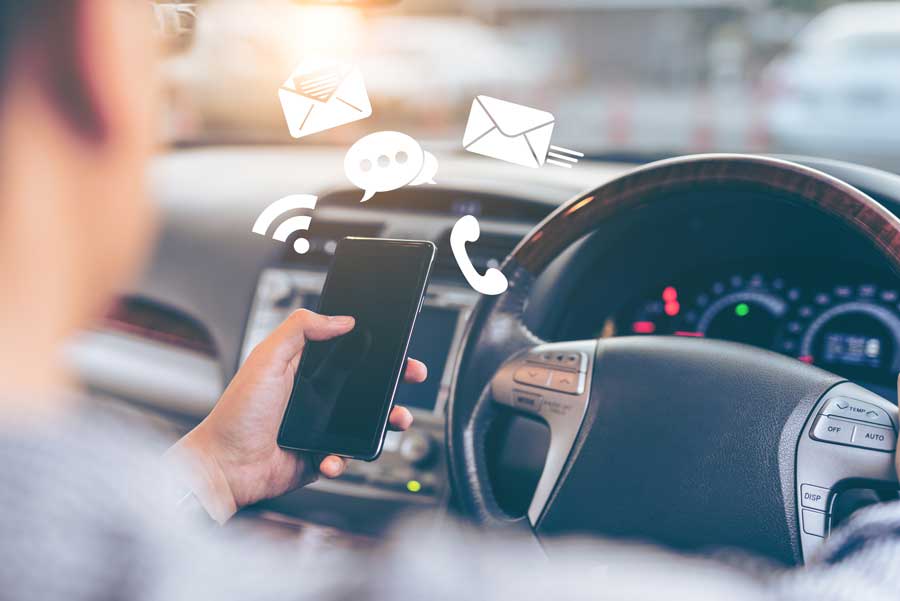Blog
Distracted Driving: New Legislation to Understand Before You Get Behind the Wheel
Every driver gets distracted at some point, whether it’s by persistent thoughts or a text conversation. Unfortunately, distracted driving is one of the leading causes of vehicle crashes, and is responsible for thousands of deaths each year.
New Distracted Driving Laws and the Consequences of Breaking Them
Earlier this year, Washington state implemented a new distracted driving law. Essentially, it says that drivers may not operate handheld electronic devices while operating a motor vehicle. Breaking this new law could cost you a $136 ticket.
The law does not apply if drivers use the device for emergency purposes or in compliance with employment policies while working transit or commercial driving jobs.
In Washington, it’s still alright to use your handheld electronic device while driving if it’s mounted somewhere and requires “minimal use of a finger.” Watching video is never alright, however.
Other distractions (considered “secondary offences” if they contribute to dangerous driving) include things like putting on makeup, fumbling with food or holding a pet. So, if you get pulled over for expired plates, you won’t get in trouble for eating while driving.
But if you’re pulled over for speeding, that sandwich could cost you $99 on top of the speeding ticket. And, don’t forget that a ticket for distracted driving could drive up your insurance premiums as well.
Distracted Driving is a Major Cause of Accidents
Washington is just one state that’s cracking down as distracted driving continues to be a major cause of accidents nationwide. According to the National Highway Traffic Safety Administration, 3,477 people were killed as a result of distracted driving in 2015. Another 391,000 were injured.
The National Safety Council estimates that a minimum of 26 percent of all vehicle crashes (including property damage, injury and fatality crashes) in 2012 were caused by talking or texting on cell phones.
Those numbers may sound high, but distracted driving goes well beyond using your cell phone or playing with the radio. According to the CDC distracted driving comes in three main categories:
- Visual: Taking your eyes off the road, whether you’re looking at something inside or outside the vehicle, means visual distraction.
- Manual: Taking your hands off the wheel and reducing your control of the vehicle, like reaching for a drink or handing something to a child in the back seat, means manual distraction.
- Cognitive: Taking your mind off driving, from intentionally playing your to-do list in your head to reading signs along the road, means cognitive distraction.
Texting and other use of electronic devices are especially concerning as they can involve all three kinds of distraction. It might seem like a simple thing you can do quickly, but consider this illustration from the CDC:
At 55 mph, sending or reading a text takes your eyes off the road for about five seconds, long enough to cover a football field.
Now that another school year has started, and high school and college students head off to class in their own cars or in those driven by friends, parents should carefully emphasize the dangers of distracted driving.
Drivers under 20 have the highest proportion of distraction-related fatal crashes, and 42 percent of high school students who’ve driven in the last month admit to texting or emailing while driving.
At the end of the day, distracted driving is a serious problem, and personal technology doesn’t make it easier to stay focused on the road. Learn what the law says where you live, and talk to the drivers in your life about the realities and human and financial costs of driving while distracted.
Table of Contents








